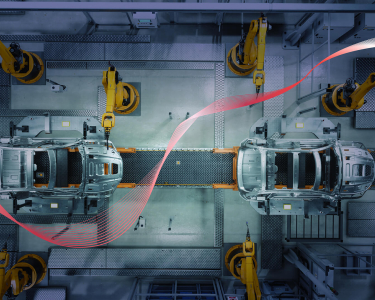SAP Agentic AI : C-suite Vision for the Future of Autonomous Enterprise Operations
The future of AI is agentic. One of the most significant developments for enterprise applications in 2025 is the rise of Agentic AI, a paradigm shift driven by emerging chain-of-thought reasoning in business applications.
Agentic AI introduces a digital workforce of intelligent agents that analyze problems derived from business contexts and datasets across multiple systems. These agents enhance human capabilities and fundamentally transform how we perform work.
AI agents can deconstruct complex challenges into smaller, manageable steps when embedded in a business context. They manage end-to-end workflows with autonomy, reasoning, and self-learning capabilities, learning from outcomes and continuously improving their decision-making.
We are witnessing a shift from application-centric approaches to data-driven strategies, where high-quality data assets become central to deriving actionable insights.
The emergence of multi-agent systems is redefining productivity and reshaping the future of automation. Today’s AI scenarios no longer follow rigid, hard-coded logic; AI agents adapt dynamically to evolving business rules and goals.
This blog explores what CxOs expect as they adopt Agentic AI to automate enterprise-wide operations and address pressing business challenges.
SAP Offerings: Powering Agentic AI with Unified Enterprise Data
As enterprises accelerate their AI journeys, many struggle due to fragmented data landscapes, which hinder the effective adoption of AI. SAP addresses this issue with the launch of the SAP Business Data Cloud (BDC). BDC is a unified platform launched in February 2025 to centralize data across SAP and third-party systems. The platform enables a single source of truth enriched with semantic context for SAP and non-SAP data, facilitating AI-powered decision-making.
By integrating SAP BDC with SAP Datasphere, SAP Analytics Cloud, and Databricks, organizations can eliminate data silos and fully leverage AI for predictive modeling and automation. Databricks brings advanced data engineering capabilities, allowing businesses to analyze large volumes of data and build domain-specific AI solutions on a business data fabric, all without moving data outside of SAP.
SAP BDC is the foundational layer for Joule AI agents, which are grounded in a real-time business context through the SAP Knowledge Graph. This semantic layer connects data points across applications, unveiling relationships, such as how a supplier delay is linked to a material shortage or logistical bottleneck. This contextual grounding allows AI models to evolve from probabilistic to more deterministic behavior.
SAP has further introduced a library of pre-built Joule agents across the line of business and a new agent builder that enables customers and partners to develop tailored AI agents. With SAP BDC, organizations can build custom models by combining SAP and third-party data to address data products for custom scenarios.
SAP Databricks enables zero-copy delta sharing of primary data products, eliminating the need for data duplication. This capability allows businesses to semantically combine rich data assets, such as HR headcount and finance plans, to enable unified workforce planning. The ability to share and analyze data contextually without moving it is a key differentiator for advanced analytics.
The CxOs' Expectations for the Future of Enterprise Operations
For today’s C-suite, Agentic AI is a technical evolution and a transformative lever to unlock business value across functions. When deployed at scale, Agentic AI addresses enterprise-level challenges in global supply chains, strategic planning, and market intelligence, transforming them into a competitive advantage.
Real success lies in understanding where and how to apply these capabilities. CXOs focus on:
- Identifying high-impact use cases where reasoning-based models can interpret intricate dependencies.
- Leveraging AI to boost performance, resilience, and agility across core business functions.
- Aligning AI initiatives with strategic priorities to drive measurable outcomes.
As Agentic AI matures, CxOs expect it to play a central role in orchestrating intelligent, context-aware operations.
Supply Chain Management Business Function: A Multi-Agent Example
Consider a high-tech, high-volume parts manufacturing enterprise. For its supply chain leadership team, Agentic AI promises transformation across a multi-step complex process, one that spans a spectrum of operations, including:
- Forecast to Commit: Consensus demand, supply, and inventory planning
- Build to Stock: Build and daily plan release to the manufacturing execution system
- Stock to Delivery: Order management, shipment consolidation, and warehouse management
This process becomes even more complex with the addition of reverse logistics scenarios. SAP, non-SAP ERP systems, and industry-specific or homegrown applications provide essential data and functionality in such environments.
Organizations must deploy a team of discrete AI agents to effectively manage complexity, such as in supply chain planning, manufacturing and execution, logistics, reverse logistics, and communication. These agents must be fully interconnected and grounded in business context to perform tasks autonomously and support human-in-the-loop supervision.
To enable autonomous operations, organizations require pre-trained models. These pre-built agents can integrate with third-party systems and business data products to provide more deterministic and fewer non-deterministic process elements.
Given the transactional nature of supply chains, you must modularize the entire process into discrete steps and then link them together. Building human supervision (and human steps) into agentic workflows is crucial for ensuring compliance, including monitoring part serialization attributes, adhering to exceptional business rules, and tracking key performance indicators (KPIs) such as time to market. Rather than functioning in isolation, these discrete agents will collaborate and coordinate to achieve shared outcomes. Businesses increasingly expect rapid responsiveness to shifting demand, supply disruptions, or unforeseen events. The future lies in intelligent systems that independently reroute shipments, optimize schedules, adjust inventories, and forecast demand—all with minimal human input.
Strategic Sourcing and Procurement Business Function: A Multi-Agent Example
The CPOs expect a unified information hub for supplier end-to-end life cycle management. They need a single source of truth to manage complex supplier relationships, including:
- Supplier screening, qualification, and selection
- Price negotiation and contract fulfillment capability
- Ongoing collaboration, audits, and claims
- Real-time updates on supplier status for sourcing decisions, performance monitoring, and risk mitigation
Data is required from internal SAP and non-SAP systems, procurement applications, and external third-party providers to support this. These diverse datasets must be semantically aligned at both global and regional levels to provide actionable insights for each business unit to take action and mitigate the impact of supply risk on their customers.
The process entails multiple transactional steps across the supply chain. It requires discrete agents on both the supplier and buyer sides, supported by communication and third-party agents. Further, these agents are integrated with agentic workflows, supported by human oversight steps.
The future of procurement lies in intelligent, adaptive systems where autonomous agents handle the heavy lifting of data analysis and process execution. These agents will collaborate to make informed recommendations. Still, the ultimate control of supplier governance at different stages will remain in human hands to supervise and ensure accountability in end-to-end supplier management.
Future Vision: Unlocking the Power of Multi-Agent Systems
Deploying Agentic AI across enterprise operations holds immense promise but also introduces real-world complexities. Aligning intelligent agents with business goals and integrating numerous data sources from disparate systems and third-party vendor applications makes for a challenging transformation journey for organizations.
The volume and diversity of these data sources, combined with integration challenges, especially with static legacy systems, pose significant scalability constraints. Additionally, poor data quality and the lack of a single source of truth make it even harder to ensure that AI operates on clean, consistent, and reliable business data sets.
Agentic AI is still in its formative stage. While a universal standard for cross-platform agent integration is yet to emerge, current best practices focus on single platform-specific agents that deliver tangible short-term benefits.
Many enterprise workflows are built around predictable patterns where a defined input leads to a specific, rule-based outcome. Embedding AI into these workflows can increase agility, accelerate development, and enhance responsiveness to input. These rule-based deterministic tasks are ideal for automation. However, non-deterministic tasks involving ambiguity, constant change, or multiple possible outcomes have long been complex to automate. Now, AI agents can bridge these gaps, enabling more dynamic workflows.
Key opportunities include:
- Multi-Agent Coordination: Enhancing collaboration and task execution among agents through improved communication and contextual reasoning.
- Agent-to-Agent Protocols: Establishing frameworks for rich, real-time context sharing across platforms—extending beyond fundamental rule-based interactions.
- Agent Maturity Model:
- Knowledge Agents: Provide accurate, context-rich responses based on organizational data.
- Action Agents: Execute single or multi-step tasks across systems.
- Orchestrated Agents: Collaborate across platforms to deliver holistic business outcomes.
Accelerating Innovation with Momentum that Multiplies
Our theme for SAP SAPPHIRE 2025, “Momentum that Multiplies,” conveys a powerful message of accelerating growth, scalability, and impact.
Start your path to success in low-risk domains where you can gain early insights and effectively manage probabilistic elements. Select use cases carefully, especially avoiding areas with poor data quality or incompatible integration technologies.
We are executing a focused strategy to help enterprises accelerate their AI adoption through customer-centric approaches with domain expertise.
Our Approach to Adoption:
- Leveraging SAP AI Foundation, Joule Skills, Agent Studio & Builder, SAP Knowledge Graph, and embedded business AI use cases.
- Embedding AI across processes to maximize automation, insight generation, and efficiency.
Customer Enablement Approach:
- Addressing real-world business challenges and delivering custom functionality.
- Initiating with one high-impact use case and scaling based on maturity and business value.
- Supporting customers in co-developing tailored AI agents grounded in their specific data and workflows.
Conclusion
This blog outlines the transformative potential of Agentic AI in enterprise operations. It highlights how intelligent agents can autonomously manage workflows, enhance human capabilities, and drive business value by leveraging high-quality data and advanced AI models.
Avanish is an experienced industry leader with 28 years in the SAP ecosystem, covering both business and IT roles. He has extensive expertise in developing and delivering sustainability-focused solutions across various industries, utilizing the power of SAP technologies, AI, and digital platforms to create measurable impact.Read More
Avanish is an experienced industry leader with 28 years in the SAP ecosystem, covering both business and IT roles. He has extensive expertise in developing and delivering sustainability-focused solutions across various industries, utilizing the power of SAP technologies, AI, and digital platforms to create measurable impact. He holds a bachelor’s degree in engineering from IIT Roorkee and a diploma in sustainable business strategy from Harvard Business School.
Read Less







